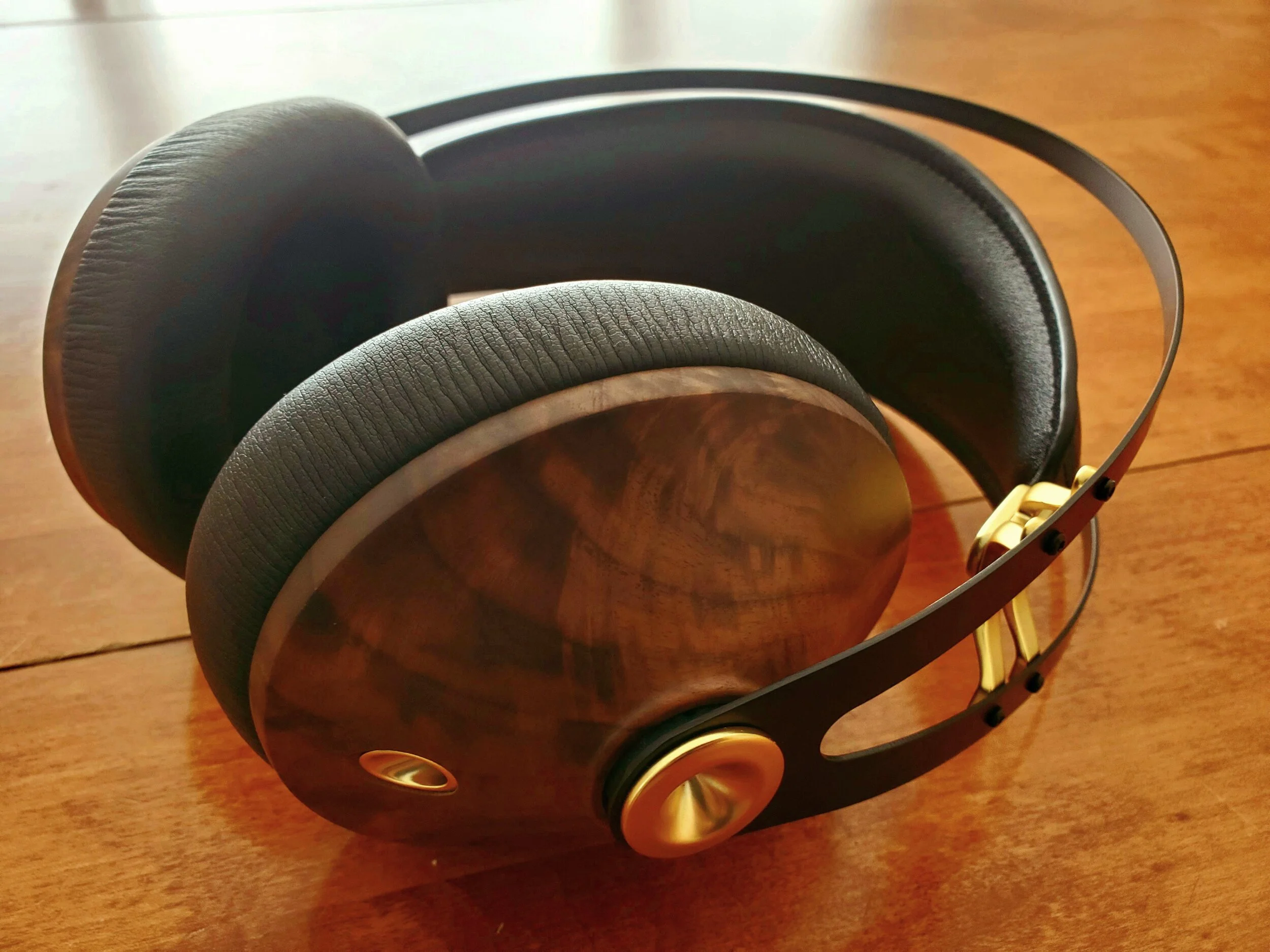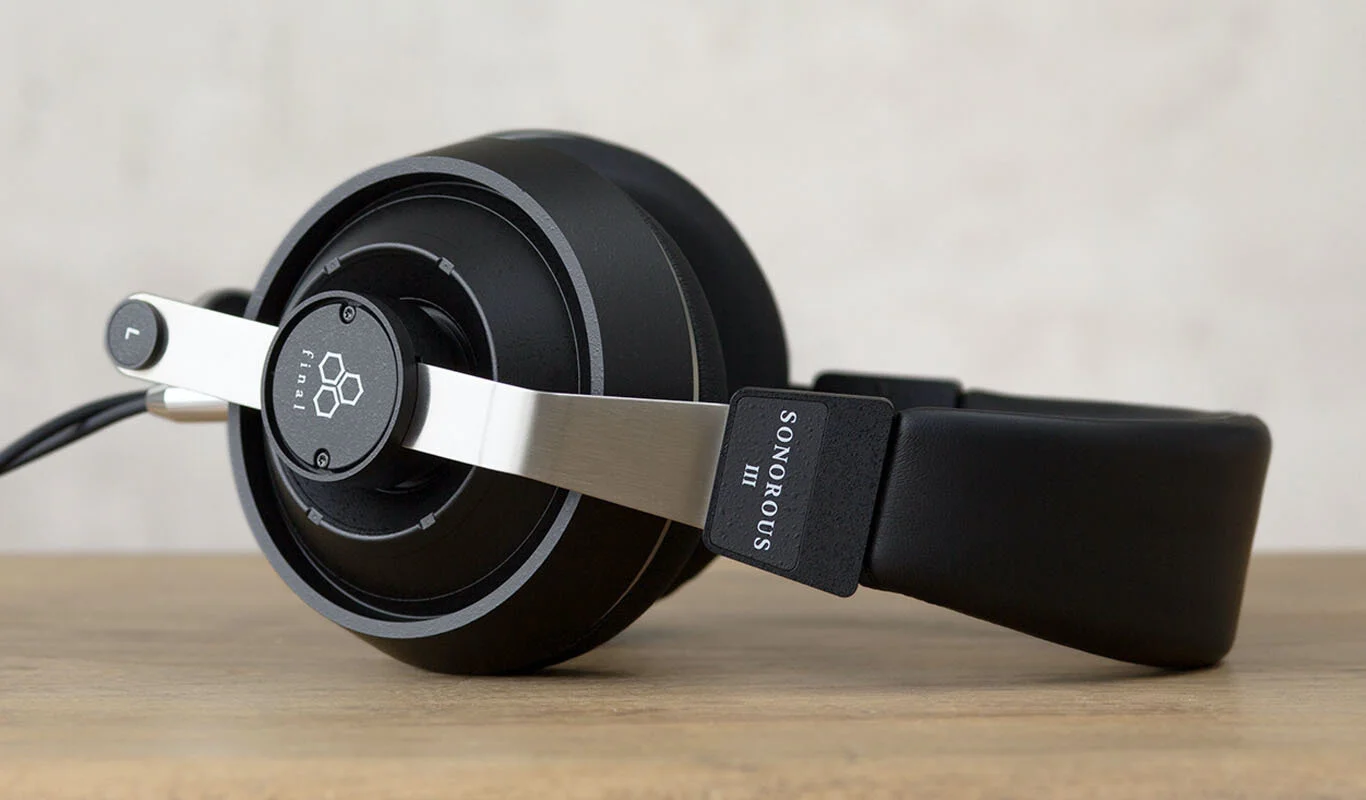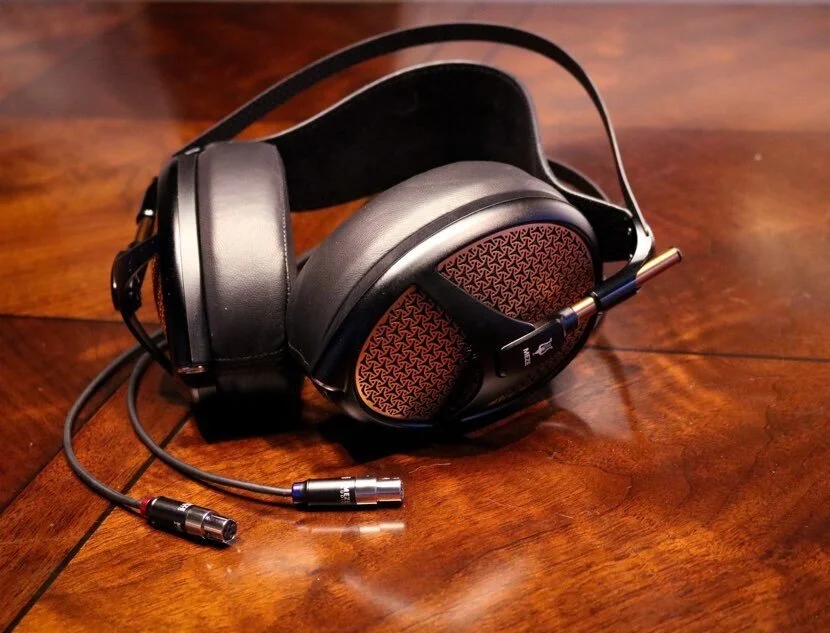MEZE 99 CLASSICS REVIEW
“You’ve Got the Music in You!”
I have become quite familiar with Meze Audio, borne in the city of Baia Mare at Romania’s northwestern border. Their flagship headphone the Empyrean was selected as our Best Product of the Year for 2020 and its In-Ear-Monitor (IEM), the Rai Penta, is an AudioKey Reviews’ favorite. And not just because of the way that they each sound, but also how each has been designed. They are truly works of art, that marry form to function to technology in a way, that, one imagines, the artistic masters—Da Vinci, Cézanne, Rembrandt, Vermeer, Matisse—would have approved. In this way Meze Audio embodies a renaissance philosophy and ethic, and eye, that has, seemingly, all but passed from the world.
The review today is of the Meze 99 Classics ($309) another beautifully designed and appointed headphone, where, once again, form follows function follows technological wherewithal. And again, like its brethren the 99 Classic has been created as a musical instrument intent on letting the music flow in order to engage, enthrall, and entertain. The 99 Classic, unlike a number of other headphones/IEMs, is not a surgical scalpel intent on dissecting the music and cleaving it of heart and soul—via a bright or analytical tuning. That said, it is, nonetheless, quite transparent. Huzzah!
REFRAIN: Unlike most reviews, this review will be non-sequential, as it will start with how the headphones actually sound and not the process of physically “undressing” them and/or laying out their various parts, specifications, etc. Think of this review then, as a non-linear movie—Memento, Kill Bill, Arrival, Eternal Sunshine of the Spotless Mind, The Terminator, In the Shadow of the Moon, etc—that, likewise, starts at the end and winds its way to the beginning.
The Sound
There will be a moment or, perhaps, several moments of, “What the…?” as the music flows from smartphone, computer, DAC/DAC-dongle, DAP, etc., through the Meze 99 Classics headphones. That is if you’re still capable of being surprised. Though, if I can still be surprised after several decades in high end audio, perhaps you can too.
As I’ve mentioned in previous reviews we are living in a rather unique time with regard to access to music or what we refer to here as GAAM—the Glorious Age of Accessible Music—whereby millions of tracks can be listened to at any time and, practically, at any place! Have a smart phone? Then it’s possible that you have millions of tracks, songs, albums at your fingertips. And with technology careening to and fro, whilst ejecting delicious, high-tech morsels here and there, morsels that can render exceptional music on-the-go, music lovers might think this nirvana. Yes, nirvana, despite the mad, crazy world gyrating about, off-axis around us.
Listening to the Meze 99 Classics is not a passive experience as they will engage heart and soul and feet and fingers to tap, and one’s head to bop. What they will not do is to trap you in the mind contemplating this mid-bass elevation or the shape of its frequency curve or midrange dips, etc. Instead you might listen, eyes closed, to the analog-like sense of ease and body and engagement, coupled with a transparency that should not be possible in a $300 headphone! One of my favorite tracks Árbakkinn from Olafur Arnalds’ Island Songs (Island Songs, Mercury (Universal France)) begins as Icelandic poet, Einar Georg Einarsson, recites one of his poems in his native language. And that I know not a word of Icelandic does not diminish, at all, the poignancy or emotion or engagement. And as the piano, then the violins and cello take over from Einar, this reviewer is stilled by the beauty and forced, simply, to listen. It should be mentioned that the music above is rendered by the quite wonderful alliance of Meze’s 99 Classics and AudioQuest’s DragonFly Cobalt.
The Meze 99 Classics’ volumetric cube—its soundstage—is generous in regard to width and height and provides quite good depth as well. Positioning, layering, and separation are very good and will together provide many “you are there moments.” And as mentioned above transparency is surprisingly good for a $300 headphone!
For the bulk of this review the Meze 99 Classics were partnered to the AudioQuest DragonFly Cobalt, which proved to be an exceptional musical partnership. Of course when paired with more expensive sources—Cayin N6II/A01 and the iBasso DX220/AMP1 Mk II—the 99 Classics scaled beautifully.
Bass
Can the 99 Classics bring the bass? Well, I did a quick spin through several of the“Ten Songs That Will Blow Your Speakers (Yahoo)” lists to see if the 99 Classics could remain unblown, up to the task, and boomy-free. Up first, Giggs’ Whippin Excursion (Landlord, SN1 Records) check, unblown and on point beat for beat, no boom. Next up Jazz Cartier’s Tempted (FLEUREVER, Universal Music) check. Kamiyada's Restraints (Static Depression, Repost Network) check. Deadcrow’s Blade (Light Trails, Terrorhythm) check. Okay, so for all those who weren’t quite sure whether or not the 99 Classics could do bass and do it well and without the “Buick Boom,” that would be a yes. Be advised though, I believe, each of the tracks above was sporting a Parental Advisory warning. Know then, that the Meze 99 Classics will provide bass across Hip-Hop, Rap, Stravinsky, Bruckner, the 1812 Overture (with cannons), etc. when called for and it will be tight, agile, musical, transparent, and, at times startling.
Midrange
My favorite song from Joan Shelly’s self-titled album is We’d Be Home (Joan Shelly, No Quarter). In truth, I love the entire album for its realness and beauty and its display of profound emotional connection and musicianship. We’d Be Home is heartrendingly beautiful and an incredibly well articulated song. And the duo of the Meze 99 Classics and the DragonFly Cobalt don’t miss a beat in conveying every scintilla of emotion, every word beautifully captured, as well as the air and space around both Joan Shelly and guitarist Nathan Salsburg. The Meze 99 Classics posses a midrange that is musical, rich, transparent, and as a result supremely engaging and the DragonFly Cobalt is an apt partner in that rendering.
Treble+
Though I have utilized this movement often, as of late, I could not help going back to it, as it clearly demonstrates so many things—extension, transparency, transient speed, positioning, timbre, and texture. The movement is Vilda Frang’s Allegro Molto II (Veress String Trio/Bartók Piano Quintet, Alpha). The most recent pairing evaluated via this movement was the VISION EARS EVE ($1300) and the iBasso DX220 AMP1 MkII ($979). Would the 99 Classics and the DragonFly Cobalt measure up, at nearly a quarter of the price? While the 99 Classics and the DragonFly Cobalt were transient quick, transparent, with very good texture and timbre, and nicely extended highs, the duo could not match the weight/body, the see through transparency, the lightening fast transient response, nor the extension of the EVE and DX220 combo ($2279). Nor could they match the EVE’s and DX220’s ability to finely parse timbre/tone and texture. Though the Meze 99 Classics and the AudioQuest DragonFly Cobalt were by no means embarrassed by this four times more expensive pairing. And there are many who would live long, happy lives with this rather outstanding duo ($608).
The Wrappings and Accessories
The Meze 99 Classics comes in a rather nondescript, department store box, upon first look. The box sports a tan color on three of its sides—front, right and left sides—with various images of the 99 Classics, awards, and graphs printed beneath a gloss overcoat. The remaining three sides—top, bottom, back—are matte black in color and only the back panel is spot printed in gold, with a raised line drawing of the 99 Classics, that surrounds the print. A duality! The contents of the 99 Classics’ box are:
Case: Hard EVA carrying pouch
Cable: 1.2m thread Kevlar OFC with Mic and remote
Cable: 3m thread Kevlar OFC
Adapter: 6.3mm gold-plated jack
Airplane jack adapter
Cable pouch
Given Meze’s other quite stellar packaging designs, the 99 Classics’ package is a great deal more modest, quasi-mainstream, everyday. All in all it is efficient, clean, though given its duality—tan gloss and black matte—it nicely skirts the predicable, the traditional. Perhaps not so department store in the end, after all.
Design—Look and Feel and Fit
The design of the Meze 99 Classics themselves, however, is something all together different. This is where Meze continues its tradition of an aesthetically engaging product, with wonderful attention to detail—real wood, leather, and black and gold-plated hardware—and engineering, as the 99 Classics can be completely disassembled for repair, replacement. Few headphones at this price point are made with this degree of aesthetic styling, servicing pragmatism, durability, and future-think.
The Specifications
Transducer size: 40mm
Freq. Res.: 15Hz-25 kHz
Sensitivity: 103dB (@1kHz, 1mW)
Impedance: 32 Ohm
Pass. Noise reduction: -30dB
Rated power: 30mW
Maximum input power: 50mW
Distortion: <2%(at 1kHz/1mW)
Plug Size: 3.5mm gold-plated
Core length: 1.2m
Weight: 260g without cable
Drivability
The Meze 99 Classics have a relatively low impedance (32Ω -Ohms) and a relatively high sensitivity (103dB). The 99 Classics worked beautifully with the DragonFly line, smartphones, computers, and then scaled beautifully with more powerful, more apt, technically accomplished, musical gear.
Comparisons
Final Audio Sonorous III: ($259)
The Final Audio Sonorous III and the Meze 99 Classics have a good deal in common. Their respective bass responses were very close to being a match, though the Sonorous III may have gone just a wee bit deeper. Both bass responses proved spot on for movies, though in terms of spaciousness and breadth and depth of soundstage the Meze 99 Classics would be ahead on points here for both music and movies. If you’ve not watched a movie with either of these headphones, then do. Their midranges were also neck and neck, though the 99 Classics proved to be the more refined and transparent of the two. And their highs were also, relatively, extended and sweet, though, again, the 99 Classics were more transparent and thus able to uncover more detail. The 99 Classics are also a good deal lighter and for those with smaller heads/necks this could, indeed, be a determining factor. Aesthetically, I nod in the direction of the 99 Classics. That said, I have very much enjoyed my time with both of these punching-far-above-their-weight-class headphones. Nod to 99 Classics.
Meze Empyrean ($2999)
Well, they are brethren, beautifully and artistically designed, developed and constructed, and while the 99 Classics bears a worthy simulacrum to the voice of its more accomplished sibling, there is, nonetheless, a chasm of difference. Spaciousness, openness, positioning, transparency, refinement, delicacy, and an engrossing musicality of tone/timbre and texture are what lift the Meze Empyrean above its over-achieving and quite talented sibling. Of course a ten to one price differential, cutting edge, patent-pending technological, and a more expensive component set can, more often than not, tip the balance (though not always). And so it is here with the Meze 99 Classics and its kith and kin the Meze Empyrean Product of the Year 2020.
Synergy
Meze 99 Classics & AudioQuest DragonFly COBALT ($299)
I listen to this combination across various genres and a vast array of albums, tracks, etc. And the truly stunning thing about the 99 Classics and the DragonFly Cobalt is the incredible refinement, musicality, transparency, and engagement that these two pieces, each, approximately, $300 a piece, create toward a symbiotic synergy. Must be heard to be believed. There is an openness, generally, associated with far more costly audio equipment and a naturalness that owes itself to the analog old school. Did I mention transparency? Patricia Barber’s Dansons La Gigue (Verse, Premonition Records) plays and brushes across cymbals are just that, decidedly so. There is no guess work, no “sshhhsch” just brushes passing over cymbals. Words and phrases formed and released across Ms. Barber’s lips come with a clarity and naturalness, that pauses, momentarily, the review process, once again. Sibilance has long been dispatched across this track and there are no mementoes to it. Tone/timbre and texture of the saxophone, the guitar are organic, evocative, riveting. This combo will definitely be featured in our Magical Synergies section. And both for $608!
Meze 99 Classics & iBasso DX220 AMP1 Mk II ($979)
The 99 Classics scaled beautifully with the iBasso DX220, in truth, across all relevant parameters. The transient speed of this duo got a Mad Max, nitro-fueled, turbo boost. And a transparency that liberated layers of detail, microdynamics, nuance, air, and staging cues—separation, positioning, layering. All happening across a black-quiet background, that was brought into relief, when the music rose, across a broad and deep soundstage. Bass is now even more rock solid, impactful, and tight. Case in point—Massive Attacks’ Angel (MEZZANINE, ) plays now via this combo and it is as tight as new drum skins, as notes reach down to stygian depths and rumble! It compels movement—rocking, head-bopping, rhythmic typing. Can the 99 Classics scale? (Expletive) yes! In sum the DX220 splendidly drove the 99 Classics to a higher performance level with a tonality safely ensconced in analog-like musicality, but closer, no doubt, to the neutral zone.
Meze 99 Classics & Cayin N6II/A01 ($1,399)
Melody Gardot’s C’est Magnifique (Sunset in the Blue, Decca) plays and there is an edible, analog-like richness across this track that is, for lack of a better word, spellbinding (in the best sense). Further, there is nuance of tone/timbre, and transparency that come together to flesh out not only detail but emotion as well. This combination is itself a time machine in that it transports one to memories of turntables and tubed amps and analog tapes. Yes, the 99 Classics can scale in terms of both detail and musicality as aligned to the Cayin N6II, a Best of the Year 2020 product for AudioKey Reviews. The 99 Classics have, via the Cayin N6II, conjured a musicality and romanticism evocative of Cézanne’s Still Life or Frederic Leighton's Flaming June or Monet’s Water Lillies .
Conclusion
I would imagine that for the vast majority of us music is comfort food. Perhaps not so much for those for whom music serves first and foremost as a professional calling, wherein a different set of instruments—tools—are needed to perform their work. Understood. Though, as mentioned often across reviews and on the About Us and Modus Operandi tabs, AudioKey’s reviews cater to the music lover or those for whom music is transportive.
The Meze 99 Classics is primarily for music (and movie) lovers, in our quite subjective opinion, as it gets to the heart of the music, but with a transparency that nicely defines the venue whether intimate jazz club, symphony, arena rock concert, etc., while also providing great insight to the performer(s) and performance. And most important of all, the Meze 99 Classics will perform its magic with smartphones, computers, DAC-dongles, DAC/Amps, DAPs, etc. And don’t forget the movies or you’ll be missing out entirely on another of its wonderful strengths!
We highly recommend the Meze 99 Classics to music and movie lovers across our very small, wide world, who from time to time seek a comforting balm, an audacious stroll down hip-hop lane, a raucous sci-fi movie, or simply to time travel to another musical epoch or, perhaps, a specific point or memory in their lives.
Pros: Musical, transparent, engaging, great bass extension, superb aesthetics, good soundstage.
Cons: Ahhhh… (I am in no way associated with Meze Audio or taking pay or commissions or remuneration of any kind.)
Music—qobuz exclusively
Alexander Tharaud—Tharaud Plays Rachmaninoff
Omar Sosa—Ballads, Calma
Patricia Barber—Verse
Rickie Lee Jones—Pop Pop
Sade—Lovers Live
Sheku Kannah Mason—Inspiration
Tracey Chapman—Where You Live
Olafur Arnalds—Island Songs
Melody Gardot—Sunset In The Blue
Melody Gardot—My Worrisome Heart
Eiji Oue—Rachmaninoff: Symphonic Dances
Hilary Hahn—Tchaikovsky
Mechell Ndegeocello—Bitter
Maxwell—Maxwell’s Urban Hang Suite
Sarah Jarosh—Undercurrent
Igor Stravinsky—Stravinsky: Le sacre du printemps (The Rite of Spring)
Annie-Sophie Mutter—Mendelssohn, Brahms: Violin Concertos
London Grammar—If You Wait
Stevie Wonder—Innervisions
Marvin Gaye—What’s Going On
Miles Davis—Kind of Blue
Jóhann Jóhannsson—Orphée
Dave Holland—Emerald Tears
Kremer, Trifonov, Dirvanauskaite—Preghiera/Rachmaninov Piano Trios
Massive Attack—Mezzanine
Vilda Frang’s—Veress String Trio/Bartók Piano Quintet
Ancillary Equipment
Meze Empyrean
Rosson Audio RAD-0
oBravo EAMT-2C IEM
VISION EARS EVE IEM
Final Sonorous III
FiiO FH5
iFi Pro iDSD
LTA Z10E
Border Patrol DAC
Cayin N6ii/A01
Cayin N6ii/E01
iBasso DX220 AMP1 Mk II
iBasson DX220 AMP9
Burson Audio Conductor 3XP
AudioQuest DragonFly Cobalt
AudioQuest DragonFly Red
AudioQuest DragonFly Black
AudioQuest Dragon Tail
Samsung S10
The Company
Meze Audio 99 Classics
Retail $309
Meze Audio
Iuliu Maniu str., nr. 38,
1st floor, ap. 2,
Baia Mare, 430131, Romania
info@mezeaudio.com
www.mezeaudio.com
Kermit E. Heartsong
Editorial Note: Yes, we flaunt the song titles in quotations dictate, as we find our treatment—italicization—a good bit more, well, elegant. Quotation marks can be quite bulky and space devouring. Though we append this style choice when our reviews go to our partner—Positive Feedback. And since album titles are, generally, behind parenthesis, with us, we leave them alone. ;)









